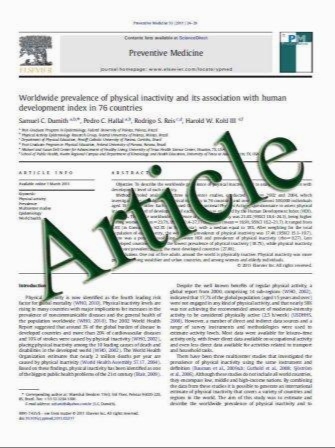Microwave Ablation of Porcine Kidneys in vivo: Effect of two Different Ablation Modes (‘‘Temperature Control’’ and ‘‘Power Control’’) on Procedural Outcome
- نوع فایل : کتاب
- زبان : انگلیسی
- مؤلف : C. M. Sommer F. Arnegger V. Koch B. Pap M. Holzschuh N. Bellemann T. Gehrig J. Senft F. Nickel C. Mogler S. Zelzer H. P. Meinzer
- چاپ و سال / کشور: 2011
Description
Purpose This study was designed to analyze the effect of two different ablation modes (‘‘temperature control’’ and ‘‘power control’’) of a microwave system on procedural outcome in porcine kidneys in vivo. Methods A commercially available microwave system (Avecure Microwave Generator; MedWaves, San Diego, CA) was used. The system offers the possibility to ablate with two different ablation modes: temperature control and power control. Thirty-two microwave ablations were performed in 16 kidneys of 8 pigs. In each animal, one kidney was ablated twice by applying temperature control (ablation duration set point at 60 s, ablation temperature set point at 96C, automatic power set point; group I). The other kidney was ablated twice by applying power control (ablation duration set point at 60 s, ablation temperature set point at 96C, ablation power set point at 24 W; group II). Procedural outcome was analyzed: (1) technical success (e.g., system failures, duration of the ablation cycle), and (2) ablation geometry (e.g., long axis diameter, short axis diameter, and circularity). Results System failures occurred in 0% in group I and 13% in group II. Duration of the ablation cycle was 60 ± 0 s in group I and 102 ± 21 s in group II. Long axis diameter was 20.3 ± 4.6 mm in group I and 19.8 ± 3.5 mm in group II (not significant (NS)). Short axis diameter was 10.3 ± 2 mm in group I and 10.5 ± 2.4 mm in group II (NS). Circularity was 0.5 ± 0.1 in group I and 0.5 ± 0.1 in group II (NS). Conclusions Microwave ablations performed with temperature control showed fewer system failures and were finished faster. Both ablation modes demonstrated no significant differences with respect to ablation geometry.
Cardiovasc Intervent Radiol DOI 10.1007/s00270-011-0171-5 Received: 4 January 2011 / Accepted: 18 April 2011


